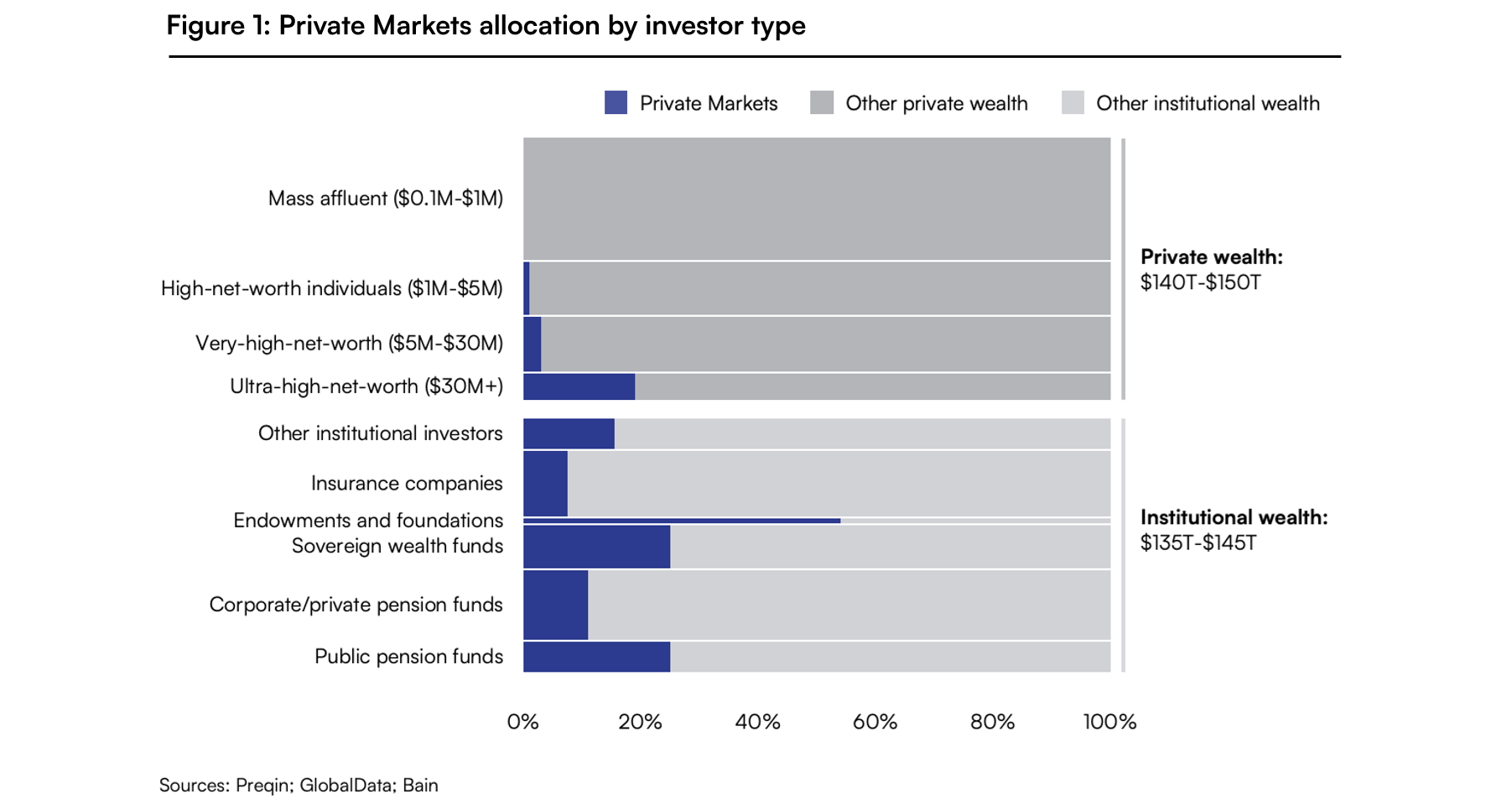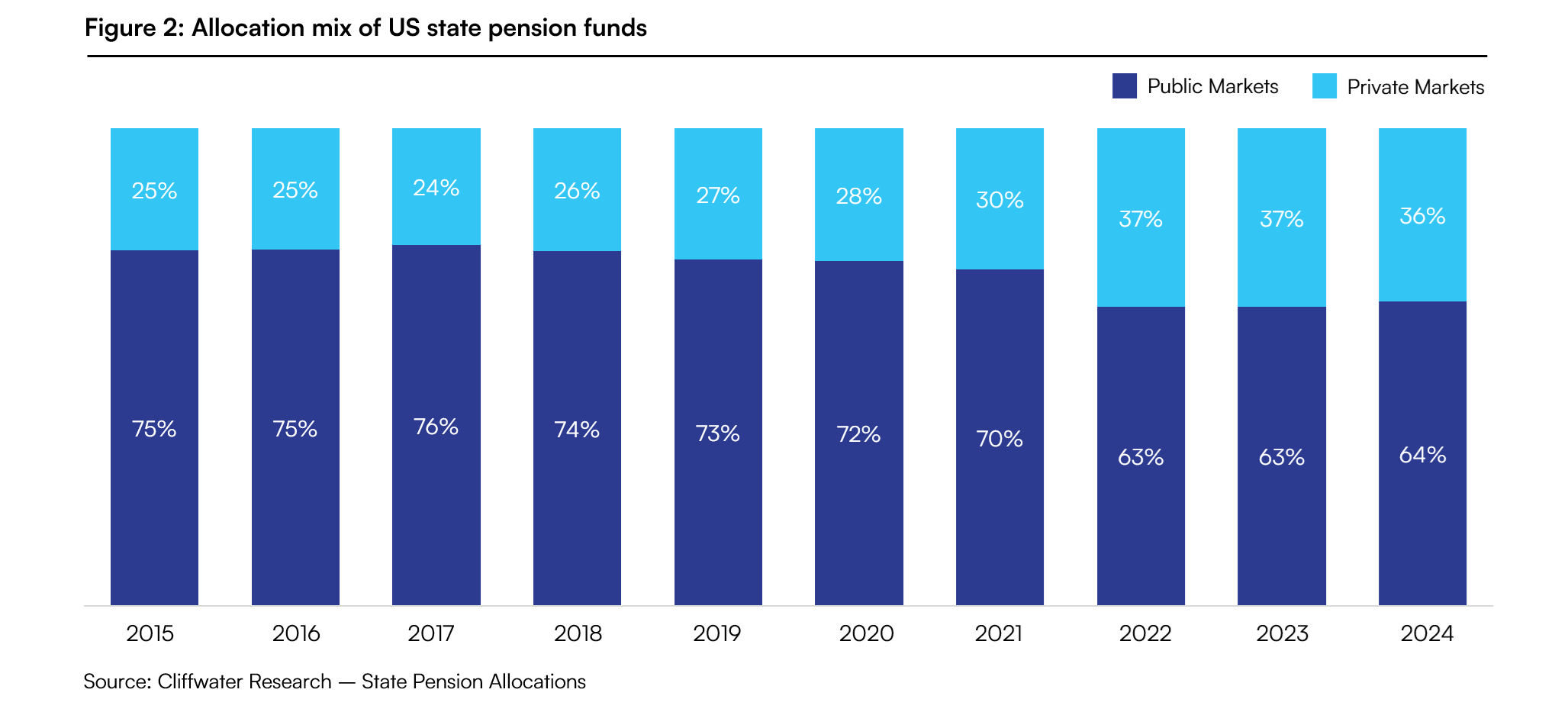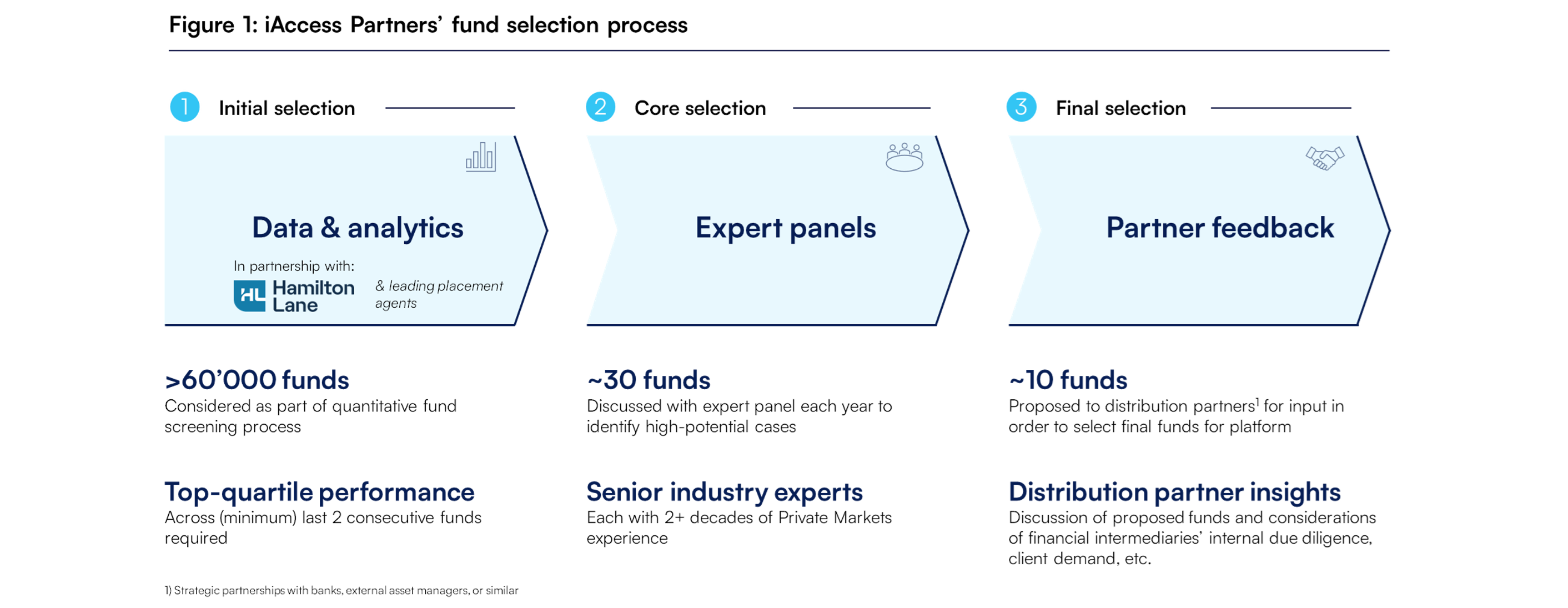Bridging the Allocation Gap in Private Markets
An iAccess Partners Series: Episode 3/6
In our previous article, we highlighted how Private Markets outperform public markets while offering clear diversification benefits for investors. These advantages have made Private Markets a cornerstone of portfolios of institutional investors. Yet, private individuals remain significantly under-allocated compared to their institutional counterparts. In this article, we take a closer look at this substantial allocation gap and examine how it developed in recent years.
Key takeaways: Episode 3/6
1. Institutional investors have steadily increased Private Markets allocations, now averaging over 23% of their portfolios.
2. Private investors remain under-allocated, typically committing only 0-3% on average to Private Markets.
3. Product innovations and regulatory changes are expected to narrow the allocation gap over the next decade.
Diverging allocations in Private Markets
Private Markets have grown at an unprecedented pace over the last 20 years, but institutional and private investors have embraced them at very different paces. While institutions such as pensions, endowments, insurance firms, and sovereign wealth funds have steadily raised their target Private Markets allocations, most private investors have remained on the sidelines. This divergence has created a significant capital allocation gap between the two investor types (see figure 1). Excluding ultra-high-net-worth individuals (which often act similar to institutional investors through family offices and the like), private investors show a substantially lower allocation to Private Markets compared to institutional investors. Looking back on our earlier insights in episode 2 of our series, individual investors therefore miss out on the substantial growth and diversification benefits that Private Markets – across Equity, Debt, Real Estate, and Infrastructure investments – have to offer.

The institutional playbook
This gap becomes clearer when examining how institutional investors have systematically made Private Markets a core component of their long-term strategies, focusing on risk-adjusted returns beyond public markets.
Consider CalPERS, the largest U.S. public pension fund. With $500 billion under management, it recently raised its Private Equity allocation – a move reflecting not just conviction in the asset class but a broader shift among U.S. state pensions, which have steadily increased their Private Markets allocations from 25% in 2015 to 36% in 2024, on average. This shift highlights how institutions are building robust, diversified portfolios that can withstand market volatility (see figure 2).

Large endowments, inspired by Yale University’s investment model, have followed a similar trajectory to pension funds, moving away from heavy reliance on public equities and bonds in favor of Private Markets (see figure 3). For these large-scale institutions, Private Markets allocation often exceeds 50% of their total portfolios. This evolution reflects a structural preference for assets that offer higher return potential, diversification, and inflation protection – principles that have become foundational to institutional portfolio construction.

The missed opportunity for private investors
Despite controlling over half of global wealth, private investors account for less than 7% of total Private Markets capital. This significant underexposure represents not only a missed opportunity for higher returns and increased diversification, but also a structural disadvantage compared to institutions that have optimized their portfolios for years.
Figure 1 illustrates this imbalance:
- The mass affluent segment ($100k to $1m) – representing an enormous pool of private capital – has no exposure to Private Markets at all.
- Private investors with $1m to $30m in wealth allocate only a fraction of their portfolios to Private Markets, while ultra-high-net-worth individuals ($30m+) have allocations comparable to some institutions.
- Large-scale institutions, such as endowments, sovereign wealth funds, or pension funds, have built substantial Private Markets portfolios, sometimes even exceeding their public asset allocations.
Why does this gap exist?
Institutions have advantages of scale, access, and expertise, allowing them to commit to illiquid funds and build diversified portfolios. Private investors, on the other hand, have historically faced high barriers of entry, including unfamiliar investment structures, illiquidity, large investment minimums, and operational challenges. Overcoming these structural and behavioral barriers is key to unlocking better outcomes for private investors.
Looking ahead, signs suggest that the gap will narrow as private investors gain greater access to Private Markets. Deloitte predicts that US private investor allocations will rise from $80 billion in 2025 to $2.4 trillion by 2030, while the EU is expected to grow from €924 billion to €3.3 trillion. A recent State Street report notes that by 2027, private investors are set to become the primary source of Private Markets fundraising, fueled by product innovation in open-ended/evergreen fund structures.
Up next: Challenges for private investors when investing in Private Markets
The Private Markets allocation gap between private and institutional investors is substantial. In our next episode, we will dive into the historical drivers of private investors’ under-allocation – from structural barriers and liquidity concerns to knowledge gaps – and examine how new solutions are improving access. With these new offerings, the question for private investors is no longer if they should consider Private Markets, but how they can overcome access hurdles and integrate these strategies effectively.
Interested to learn more? Discuss Private Markets with iAccess Partners
-








